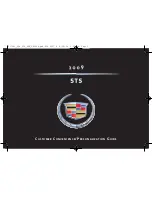
Black plate (16,1)
Chevrolet Silverado 2500HD and 3500HD Owner Manual (GMNA-Localizing-
U.S./Canada-7142528) - 2014 - crc - 3/26/13
9-16
Driving and Operating
the front and rear axles. See
“
Certification/Tire Label
”
later in
this section.
“
Steps for Determining Correct
Load Limit
–
1.
Locate the statement "The
combined weight of
occupants and cargo should
never exceed XXX kg or
XXX lbs." on your vehicle
’
s
placard.
2.
Determine the combined
weight of the driver and
passengers that will be riding
in your vehicle.
3.
Subtract the combined
weight of the driver and
passengers from XXX kg or
XXX lbs.
4.
The resulting figure equals
the available amount of cargo
and luggage load capacity.
For example, if the "XXX"
amount equals 1400 lbs. and
there will be five 150 lb
passengers in your vehicle,
the amount of available cargo
and luggage load capacity is
650 lbs. (1400-750 (5 x 150)
= 650 lbs.)
5.
Determine the combined
weight of luggage and cargo
being loaded on the vehicle.
That weight may not safely
exceed the available cargo
and luggage load capacity
calculated in Step 4.
6.
If your vehicle will be towing
a trailer, load from your trailer
will be transferred to your
vehicle. Consult this manual
to determine how this
reduces the available cargo
and luggage load capacity of
your vehicle.
”
See
for important information on
towing a trailer, towing safety
rules, and trailering tips.
Example 1
A. Vehicle Capacity Weight for
Example 1 = (453 kg) (1,000 lbs)
B. Subtract Occupant Weight @
68 kg (150 lbs) × 2 = 136 kg
(300 lbs)
C. Available Occupant and Cargo
Weight = 317 kg (700 lbs)
















































